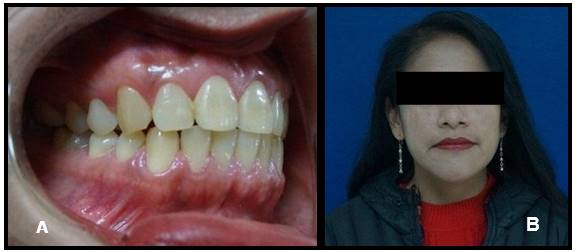Abstract
Odontogenic keratocyst potentially aggressive and high recurrence, with clinical and radiographic features not clearly defined. It occurs at any stage of life. 70 to 80% are located in the mandible, commonly in the third molar region and the mandibular angle from where they progress towards the branch and body. They are generally asymptomatic lesions that can reach considerable dimensions. They are often
found on routine radiographic examination. The objective of this article is to report the case of a 40-year-old woman with parakeratinized odontogenic keratocyst, evaluating her clinical, radiographic and histopathological characteristics that led to timely and adequate conservative management and treatment with satisfactory results. Concluding that the careful preparation of the medical history based on clinical, radiographic and histopathological findings lead to a correct diagnosis, which allows the development of an adequate treatment plan.
References
2. Pazdera J, Kolar Z, Zboril V, Tvrdy P, Pink R. Odontogenic keratocysts/ keratocystic odontogenic tumours: biological characteristics, clinical manifestation and treatment. Biomed Pap Med Fac Univ Palacky Olomouc Czech Repub. 2014; 158(2):170-174.
3. Wright JM, Vered M. Update from the 4th Edition of the World Health Organization Classification of Head and Neck Tumours: Odontogenic and Maxillofacial Bone Tumors. Head Neck Pathol. 2017;11(1):68-77.
4. Kebede B, Dejene D, Teka A, Girma B, Aguirre EP, Guerra NEP. Big Keratocystic Odontogenic Tumor of the Mandible: A Case Report. Ethiop J Health Sci. 2016; 26(5):491-496.
5. Kahraman D, Gunhan O, Celasun B. A series of 240 odontogenic keratocysts: Should we continue to use the terminology of 'keratocystic odontogenic tumour' for the solid variant of odontogenic keratocyst? J Craniomaxillofac Surg. 2018; 46(6):942-946.
6. Wright JM, Vered M. Update from the 4th edition of the World Health Organization classification of head and neck tumours: Odontogenic and maxillofacial bone tumors. Head Neck Pathol. 2017; 11(1):68–77.
7. Quezada M, Delgado W, Calderón V. Características radiográficas de los queratoquistes odontogénicos paraqueratinizados del maxilar inferior. Rev Estomatol Herediana 2005; 15(2):112-118.
8. Hashmi AA, Edhi MM, Faridi N, Hosein M, Khan M. Mutiple keratocystic odontogenic tumors (KCOT) in a patient with Gorlin syndrome: a case report with late presentation and absence of skin manifestations. BMC Res Notes. 2016; 22(9):357.
9. Naruse T, Yamashita K, Yanamoto S, Rokutanda S, Matsushita Y, Sakamoto Y, et al. Histopathological and immunohistochemical study in keratocystic odontogenic tumors: Predictive factors of recurrence. Oncol Lett. 2017; 13(5):3487-3493.
10. Menon S. Keratocystic Odontogenic Tumours: Etiology, Pathogenesi and Treatment Revisited. J Maxillofac Oral Surg. 2015; 14(3):541-7.
11. Robles P, Roa I. Keratocystic odontogenic tumor: Clinicopathological aspects and treatment. J Oral Res. 2014; 3(4):249–256.
12. Kodali R, Guttikondaleela N, Chintada K. Conservative Management of A Massive Keratocystic Odontogenic Tumour of Mandible: A Case Report and Review. J Res Adv Dent. 2014; 1:96–101.
13. Bello IO. Keratocystic odontogenic tumor: A biopsy service's experience with 104 solitary, multiple and recurrent lesions. Med Oral Patol Oral Cir Bucal. 2016; 21(5):538-546.
14. Deyhimi P, Hashemzadeh Z. Study of the biologic behavior of odontogenic keratocyst and orthokeratinaized odontogenic cyst using TGF-alpha and P53 markers. Pathol Res Pract. 2014; 210(4):201-214.
15. de Molon RS, Verzola MH, Pires LC, Mascarenhas VI, da Silva RB, Cirelli JA, et al. Five years follow-up of a keratocyst odontogenic tumor treated by marsupialization and enucleation: A case report and literature review. Contemp Clin Dent. 2015; 6(1):106-110.
16. Alchalabi NJ, Merza AM, Issa SA. Using Carnoy's Solution in Treatment of Keratocystic Odontogenic Tumor. Ann Maxillofac Surg. 2017; 7(1):51-56.


